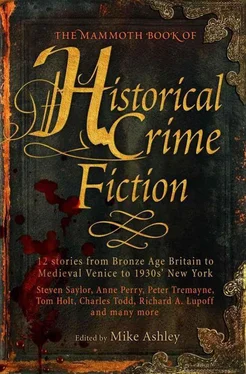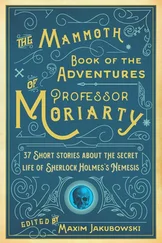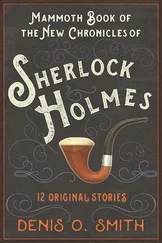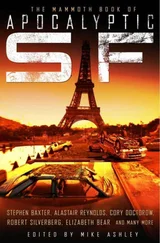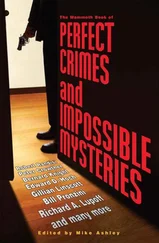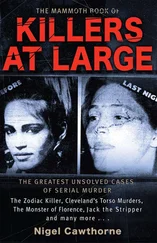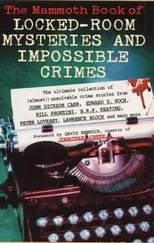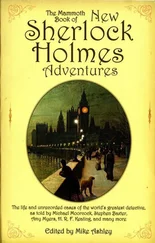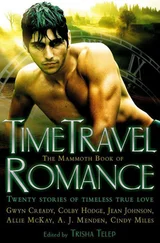Bless him. He didn’t say a word.
“And why would the sergeant do such a thing?” I continued. “Because he was ordered to, or paid, or both. Who by? Well, that’s a subject for speculation, I grant you. It could have been a member of a rival political faction — let’s see, Naso was well up in the Popular party, just as you’re quite well thought of among the Optimates, aren’t you? Or maybe it was someone who reckoned the best way to make sure there’d be a war would be by manufacturing a serious diplomatic incident. Mind you,” I added, “they’d have to be a Optimate, since the Populars don’t want a war right now. Or it could simply have been the uncle of Naso’s first wife; you know, the one who died in mysterious circumstances, falling down the stairs or something like that, thereby making it possible for Naso to marry that rich and well-connected heiress. Or maybe it was just that someone whose career’s been nothing special lately simply wanted his job. We just don’t know. I’m sure,” I added sweetly, “that once we’ve shared our theories with Naso’s friends in the Populars, they’d have no trouble thinking of someone who answers one of those descriptions. Or maybe all of them, even.”
He gave me a look that would’ve curdled milk. “Have you finished?” he said.
“Yes. Almost,” I added. “I’d just like to give you a new dictum for your collection.”
“Well?”
“Give me a firm place to stand,” I said, “and I can kick your arse from here to Agrigentum.”
* * *
Later, Orestes asked me, “So why sprats?”
“Ah,” I said, smiling like a happy Socrates. “My guess is, the Romans had chosen poor old Stratocles’ warehouse well in advance as a good place to lose the body. They wouldn’t want it found, not ever, because a disappearance was just as good for breaking up the peace talks as a visible murder, and a body might just’ve given the game away; no rope-marks or anything like that to support the crane theory. There might have been some trifling clue they’d overlooked, but which might’ve been picked up by one of our sharp-as-needles Syracusan investigators. Attention to detail, you see, a typically Roman trait.”
“But?”
I grinned. “But when they got to the warehouse — it was dark, remember, and they wouldn’t have risked a light — they made a slight mistake. They’d been intending to put the corpse in one of the damaged jars we saw there, earmarked for dumping in the bay. Instead, they dumped it in a half-filled jar, which is how come it ended up in Rome.” I shook my head sadly. “Too clever by half,” I said, “and basically just careless.”
* * *
There was no war. Scaurus went home, and was replaced by a polite old Optimate who explained that the girl Maurisca had confessed that she’d been bribed by the Carthaginians (nice touch, everybody hates the Carthaginians) to tell a parcel of lies in order to get Hiero into trouble. The charges were, therefore, withdrawn, and the negotiations proceeded to a long, drawn out, meaningless conclusion.
And that, I sincerely hope, was the last time I’ll ever have anything to do with the Romans. They may have their stirling qualities, but I don’t like them. They have absolutely no respect, in my opinion, for the scientific method.
Something to do with Diana
STEVEN SAYLOR
Over the last twenty years Steven Saylor has been carving a sizable niche for himself in the world of ancient Rome. He has recently embarked on a colossal history of Rome told in fictional form, starting with Roma (2007) which charts the growth of Rome from its earliest days to the time of Julius Caesar, and Empire (2010) which takes us through to the Emperor Hadrian. But Saylor is probably best known for his stories featuring Gordianus the Finder, who lives by his wits and, because of his acquaintanceship with Cicero in Roman Blood (1991), the first book in the series, frequently finds himself involved in the higher level of politics and intrigue in Republican Rome. Other books in the series include Arms of Nemesis (1992), Catilina’s Riddle (1993), Rubicon (1999) , The Judgement of Caesar (2004), The Triumph of Caesar (2008) and two collections, The House of the Vestals (1997) and A Gladiator Dies Only Once (2005).
Saylor is working on another volume featuring Gordianus but this time set during his early years, against the backcloth of the original Seven Wonders of the World. The following story, set in 92 BC, takes place at the Temple of Diana (know as Artemis to the Greeks) in Ephesus. Gordianus, aged just eighteen, is on an extended journey accompanied by his former tutor, the poet Antipater of Sidon, who was one of the first to list the Seven Wonders.
Marina If fires be hot, knives sharp, or waters deep,Untied I still my virgin knot will keep.Diana, aid my purpose!Bawd What have we to do with Diana?
— Shakespeare, Pericles, Prince of Tyre
“Ah, Ephesus!” cried Antipater. “Most cosmopolitan of all Greek cities — pride of Asia, jewel of the East!” He stood at the prow of the ship and gazed with glittering eyes at the city before us.
As soon as the ship left the open sea and entered the mouth of the Cayster River, Antipater had used his sharp elbows to force his way to the head of the little group of passengers, with me following in his wake; despite his wrinkles and white hair, the old poet was neither shy nor weak. Our first glimpse of Ephesus came as we rounded a little bend and saw an indistinct mass of buildings clustered against a low mountain. Moment by moment we drew nearer, until the city loomed before us.
The harbour was pierced by a long mole that projected far into the water. So many ships had moored alongside, that it seemed impossible we should find a spot, especially because other ships were arriving ahead of us, with their sails aloft and colorful pennants fluttering in the breeze. By the Roman calendar this was Aprilis, but in Ephesus this was the holy month of Artemision, marked by one festival after another in honour of the city’s patron goddess, Artemis. Antipater had told me that the celebrations drew tens of thousands of visitors from all over the Greek-speaking world, and it appeared he had not been exaggerating.
A harbour-master in a small boat sailed out to inform the captain that there was no room for our ship to dock at the mole. We would have to pitch anchor and await a ferryboat to take the passengers ashore. The ferrymen would have to be paid, of course, and Antipater grumbled at the extra expense, but I was glad for the chance to remain for a while in the harbour and take in the view.
Beyond the crowded wharves rose the famous five-mile walls of Ephesus. Where the mole met the shore these walls were pierced by an ornamental gate flanked by towers. The tall doors of the gate stood wide open, welcoming all the world into the city of Artemis — for a price, Antipater explained, for he anticipated that we would have to pay a special fee to enter the city during the festival. Beyond the walls I saw the rooftops of temples and tall apartment buildings. Further away, clustered on the slope of Mount Pion, were a great many houses. Some were like palaces, with ornate terraces and hillside gardens.
The most prominent building to be seen was the enormous theatre built into the hillside. The semicircular tiers of seats that faced the harbour were filled with tens of thousands of spectators; apparently they were watching a comedy, for every now and then I heard a burst of distant laughter. Scores of towering, brightly painted statues lined the uppermost rim of the theatre; these images of gods and heroes appeared to be gazing not at the stage below them but across the rooftops of the city, straight at me.
Читать дальше
